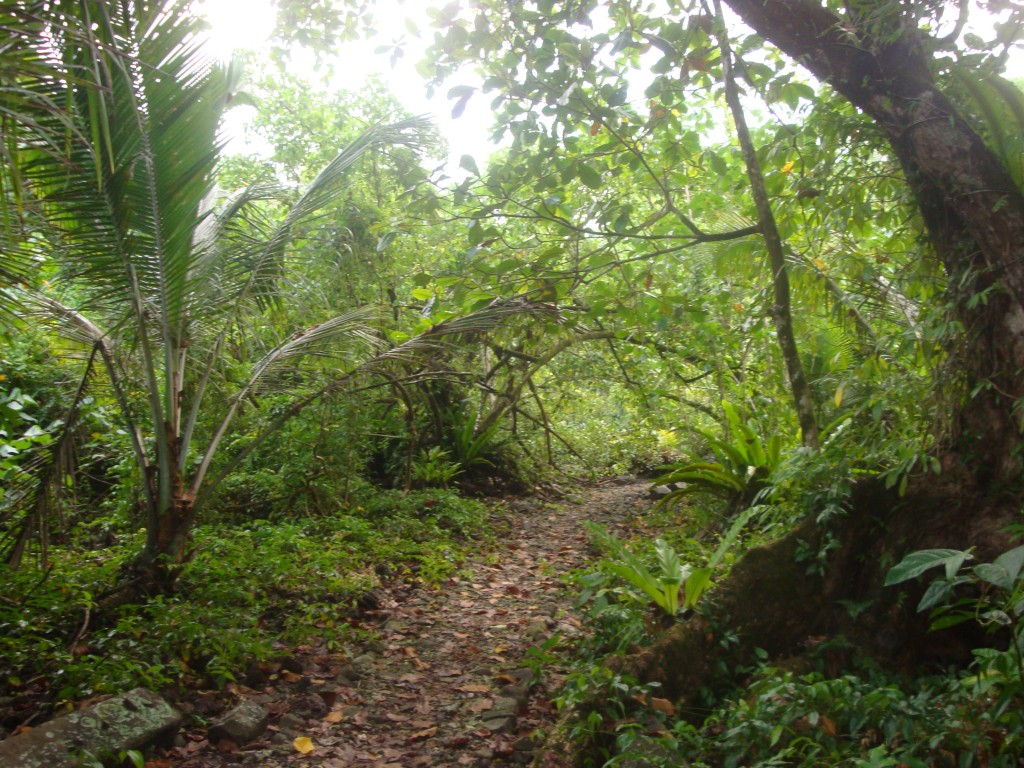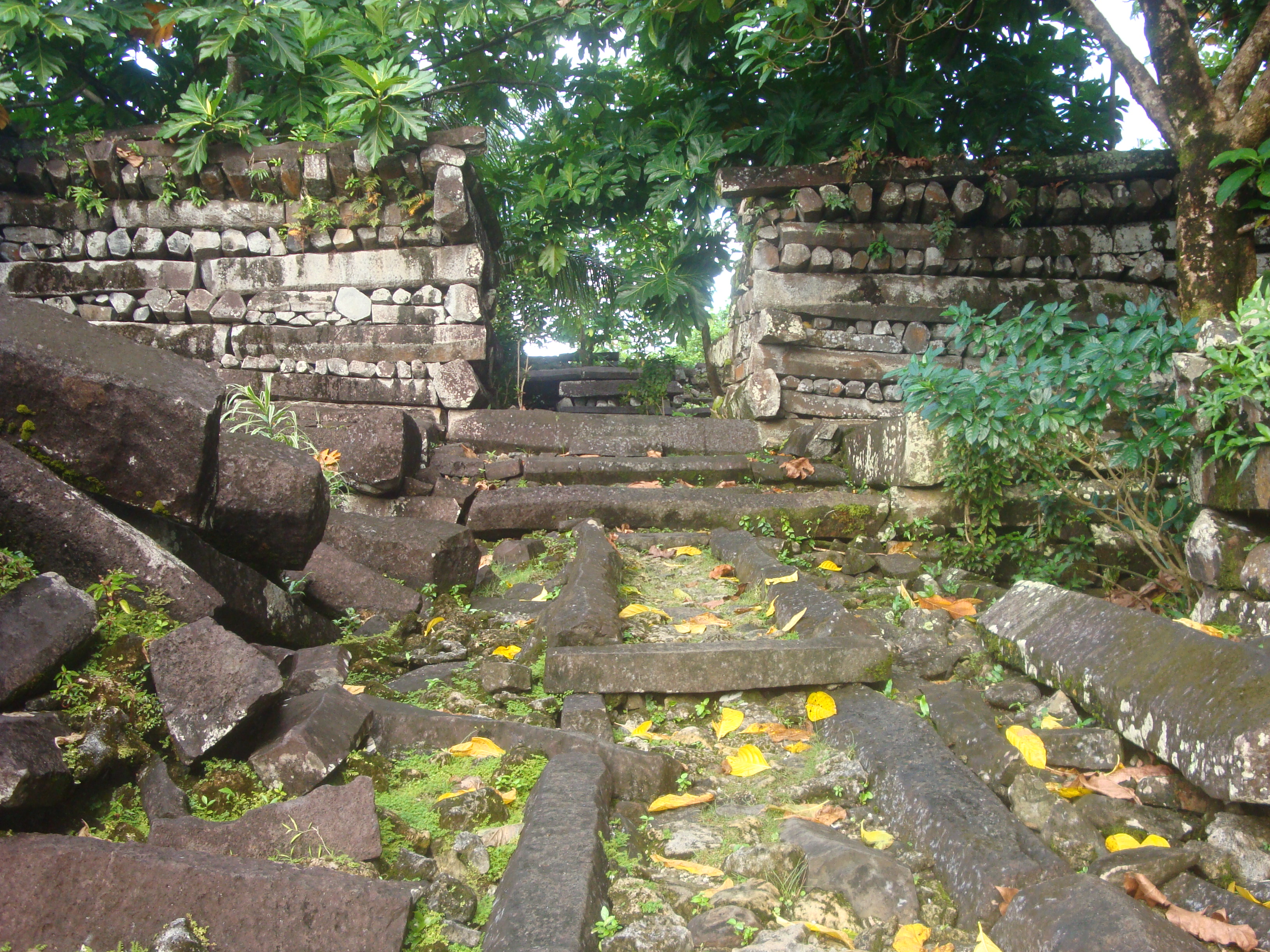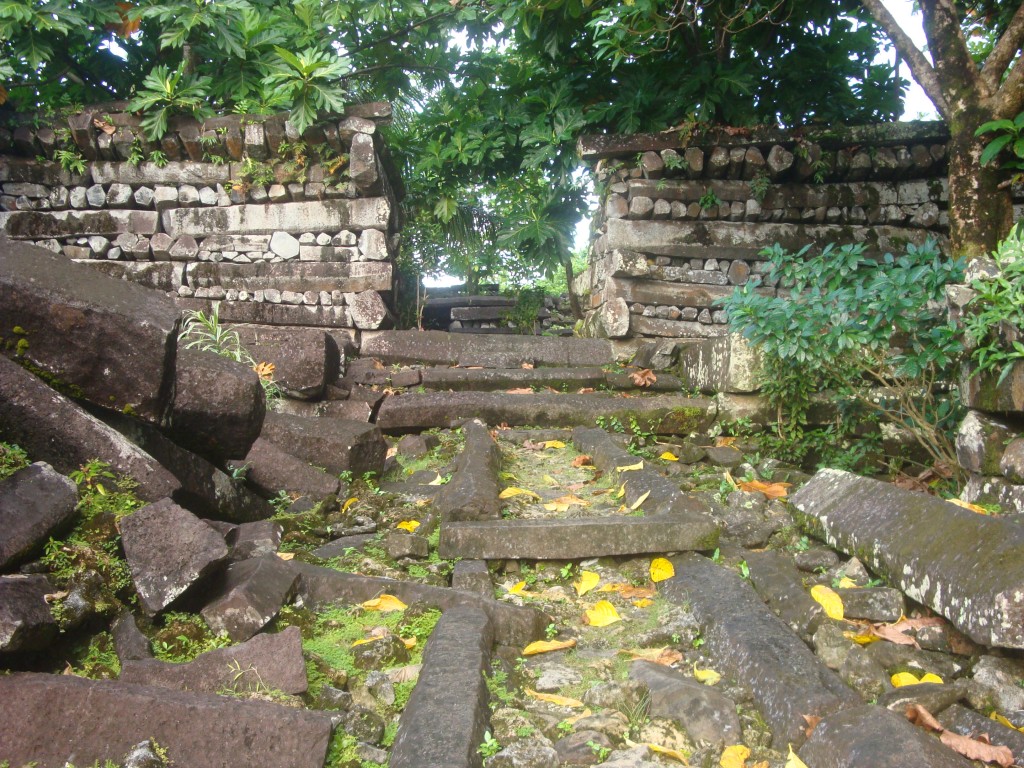
If you’re the rare non-islander who actually knows that Pohnpei is not a volcano-ravaged Roman city, I guarantee that you also already know about Nan Madol. For those of you who are new to Pacific geography, though, Nan Madol is the number one reason you should consider checking out Micronesia. This illustrious kingdom by the sea is almost single-handedly responsible for the tourist trade in Pohnpei. In fact, without it, Continental airlines might just have left Micronesia to the shipping trade–so let’s face it: if your plane just touched down in Kolonia, you’re there to see Nan Madol.
The irony, then, is that while these elaborate stone ruins—the embodiment of Pacific history—would inspire you to endure multiple flights and more time zone crossings than you care to keep track of, they wouldn’t inspire the average Pohnpeian to drive twelve miles. Almost exactly twelve miles, really, if you happened to be one of my students last year at Nahnpei Memorial High School in the neighboring municipality of Kitti.
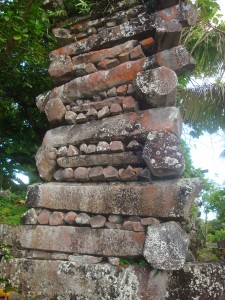
When, toward the end the year, I came across a simple one-page reading about the island’s legendary kingdom, let me tell you, I was stoked. Finding such an ideal teaching resource was rare in a country that has been, until very recently, entirely paperless. As I prepared my lesson that night, I congratulated myself on what was obviously excellence in education. Hoping to encourage real-life connections to the text, I started school the next day by asking for a show of hands of how many students had ever visited the site. In a class of thirty-two juniors, six hands went up. Awesome. No wonder the Nan Madol article was written in English.
Now, to clear some things up, this is not a place of such little means that my students would have been unable to make the trip to see these remnants of their country’s past. The majority of the kids in my classes traveled two or three times as far every week to go shopping in the capital city (not to mention the fact that there’s essentially a national pilgrimage to the cell phone store each year on the day the Pell grants get disbursed). Nevertheless, when it came to this behemoth of an ancient relic sitting right next to us, my students could not have cared less. So, given Nan Madol’s renowned popularity, it seems that the ruins are, in fact, culturally relevant…relevant to someone else’s culture, that is.
That having been said, however, a trip to the ruins is one of the most unforgettable things you can do in Pohnpei, and my students’ disinterest (which was, to be sure, in no way limited to the subject of Pohnpeian history) certainly should not dissuade you from visiting this special site for yourself . Considering, though, that those same students will likely be the next generation of guides narrating tours through Nan Madol, you may need to know a few things before you take off for a visit. I’m no expert, but here is what I do know about this “Venice of the Pacific”.
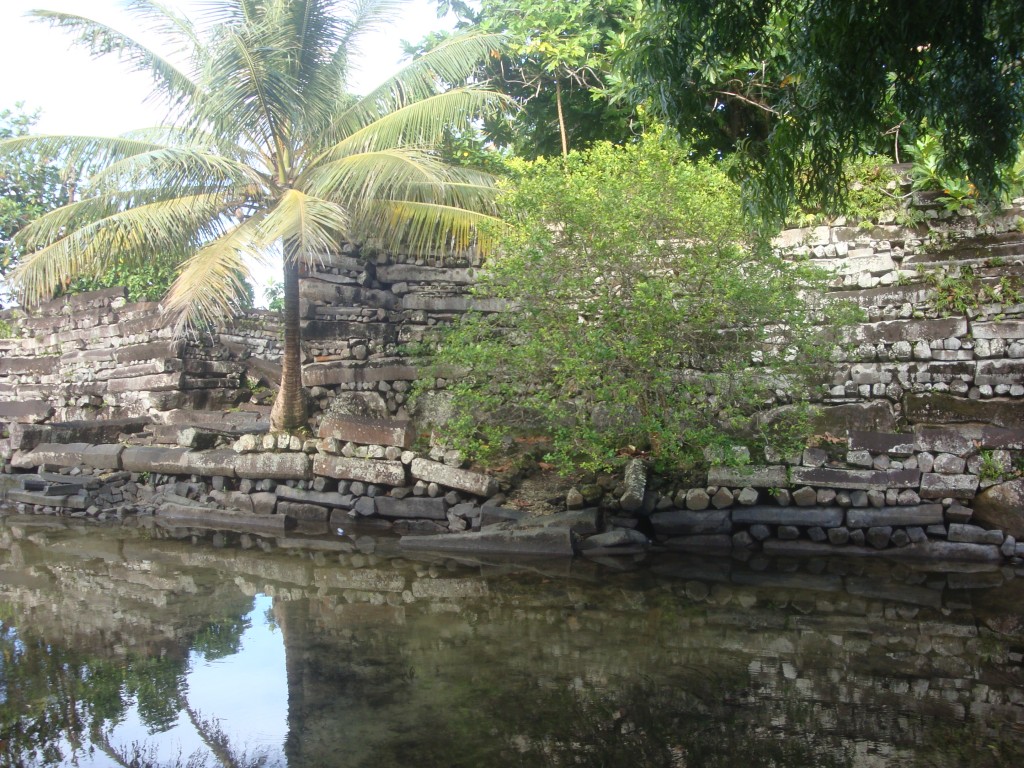
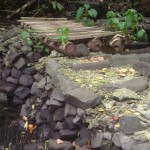
Shrouded in mystery, the remains of Nan Madol lie just beyond the mangrove in the heart of Madolenihm (mad-uh-luh-neem) on the southeastern coast of Pohnpei. Unique in the Pacific, this former kingdom by the sea was built from enormous stone “logs” brought down from the island’s distinctive mountains. These stones, like those of Britain’s Stonehenge or Egypt’s great pyramids, lend the site a sense of gravitas that is rare throughout the region. Because of them, the ruins of Nan Madol have long outlasted other Micronesian historical mainstays that were constructed from the area’s more traditional, but less enduring, abundance of wood.
What will immediately overwhelm you about this kingdom, though, is the sheer ambition of its design. As you approach the first structure from a footpath between dense mangrove thickets, the stone walls rise before you, each now-roofless shelter sprouting palm trees and tropical flora. So you roll up the cuffs of your pants, cross the first of a series of canals, and climb a leaden-looking set of elongated stairs leading up to the interior. This is just the beginning. The site, once the exclusive quarters of royal families, is comprised of close to one hundred of these small stonework-laden manmade islands, each connected by a network of canals shallow enough to wade across during low tide yet deep enough to float a dugout canoe during high tide. One day is barely enough time to explore the intricate coves and vast ocean vistas Nan Madol has to offer, so make sure to start early and bring a good camera.
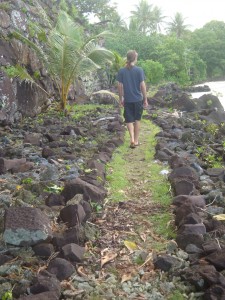
TRAVEL TIPS
PARTING THOUGHTS
No matter your skepticism, though, after you’ve just handed over your last dollar bill to a woman you could swear demanded a land use fee at both the beginning and the end of the trail, you will still stand in awe before this undeniably impressive architectural feat. Rumors abound as to its origin, but the most plausible, of course, is that a hardworking group of Pohnpeians sweated and toiled over vast amounts of time to create this extraordinary structure. My students, however, categorically insist that it was black magic. Either way, what I can tell you about Nan Madol is that you probably have about as good of a chance of seeing it in your lifetime as do any of my students living right next door. And I can assure you that you’re a whole lot more interested in getting there. If you do happen to make it, though, you’ll be glad you did. There is literally nothing like it anywhere else in the world. So perhaps my students were right about the black magic, after all.
